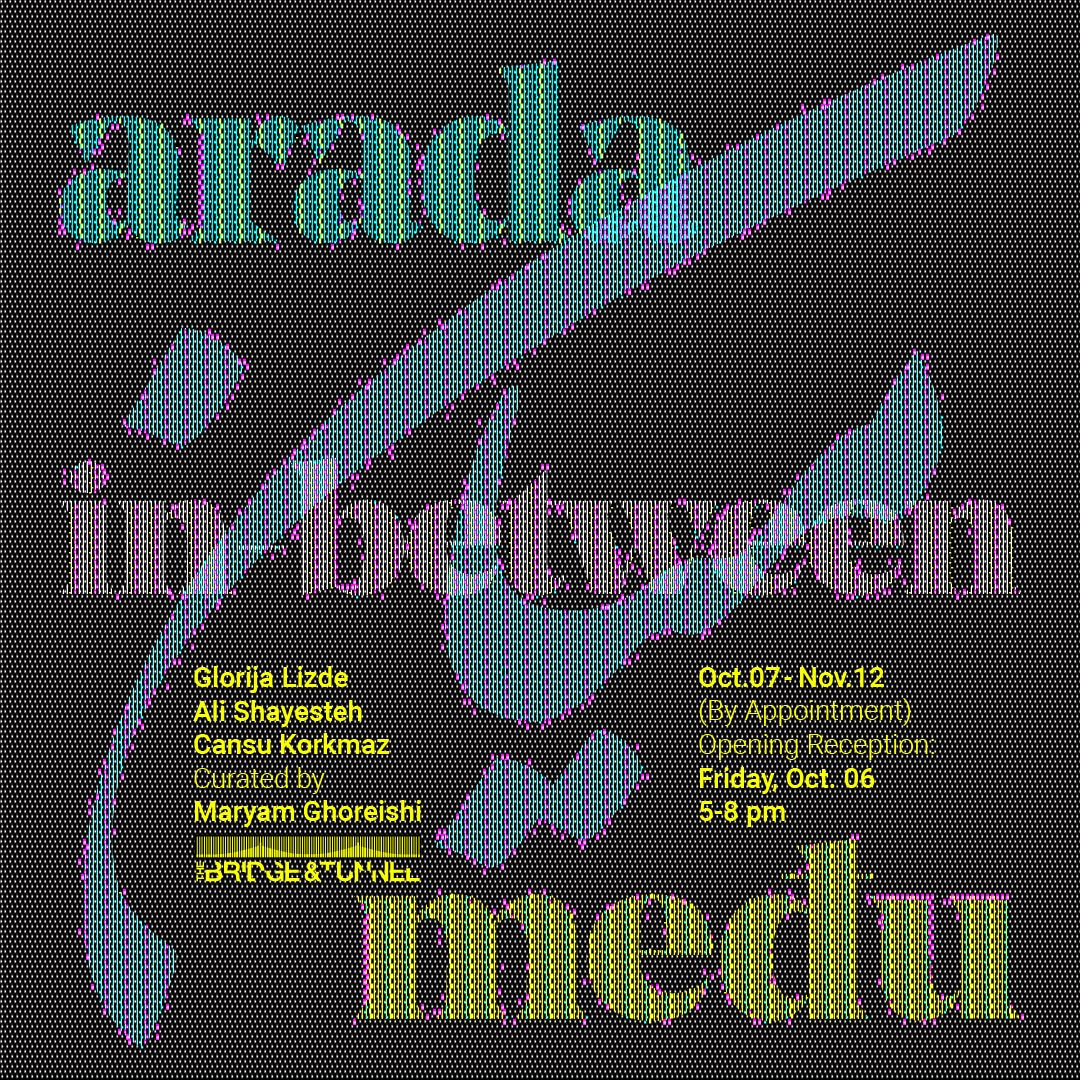Curated by Maryam Ghoreishi
Housed at the Bridge & Tunnel Gallery, In Between brings the works of artists from three different countries to New York: Cansu Korkmaz, Glorija Lizde, and Ali Shayesteh. Here, each artist offers visual narratives—rooted in personal memories that are redefined and re-contextualized and open to the viewers in this home gallery. In-Between is an intimate invitation, formed from the relationship between the artists’ stories, the materiality of memories, the audience, and this unique home gallery—a space committed to being both private and public and goes beyond the traditional gallery setting.
Memories are constituted as sequences of specific events; occurrences that unfold over time and space. And yet they are never in a fixed relationship with our understanding and perception of them. Memories remain in a state of constant change. The passage of time plays a significant role on how we perceive and remember: objects, places, spaces, words, and sentences all find new forms and meanings as we delve into the act of remembering. Memories no longer belong to the past. Easily manipulated: they become fragmented, beautiful, softened, bitter, or vague. Memories have a new life when they come to the present. It is ultimately all the life lived in between—from the formation of a memory to this instant of remembering that dictates the retelling we call memory: Which part should we change? Which should we accept?… Which should we take care of?… Which should we forget?
Here, each artist returns to unpleasant memories, not in order to suppress or forget them —or the feelings arise from them. Instead these artists engage with the malleability of this piece of the past. Memories are no longer tied to the facts. What has happened underneath is not made of moments on longs to recall. For these artists, referring to the past is a significant act to understand the self in the present. Using photography, writing, drawing, collage, and sewing, these artists explore, materialize and embody this internal journey.
Cansu Korkmaz uses photography as the primary material in her work. While going through a common personal archive of photographs, Korkmaz found her source of inspiration for this body of work. Seeking pictures of her travels with her partner, she faced a pile of photos, torn. Months earlier, after an exasperated exchange, her partner had torn up the photos and left them in the same box: fragmented memories of moments, spaces, and emotions that were carefully framed and captured by Cansu, with the desire to be kept forever. At this point, it was no longer a question of mending or reproducing those documents of memories; it wasn’t even about dealing with the anger that was exchanged during that argument. This work seeks time and space for accepting and embracing the wound and creating fresh memories based on her present feelings and situation. In the Quite a While series, Cansu reprints these torn photographs in different sizes in order to shape new arrangements; where the travel memories can exist intertwined with bitter memories of the argument. It is neither this nor that anymore and yet, it is both perpetually.
In the F 20.5 series, Glorija Lizde delves into her childhood memories of a time when her father suffered from hallucinations due to residual schizophrenia. F 20.5 stands in for the medical code of this condition which impacted the entire family. In this series, Glorija doesn’t attempt to reconstruct her childhood memories. Instead her aim is to embody her father’s visual or auditory hallucinations. Through stage photography, she creates worlds based on his father’s narrations. Remembered fragments of those hallucinations—her father now carries nothing more than the memories, that are not far from Glorija’s personal interpretations. For her, photography is a therapeutic tool to accept and let go of unpleasant memories. By placing herself and her twin sisters in different situations based on her father’s illusions, she tries to redefine her relationship with her father and her childhood. Her work becomes a medium to encounter and understand the self in its current state..
In the series, Thousands of Curses on This and on That, Ali Shayesteh deals with the concept of waste (throwaways): the used fabrics of his studio become space to hold and reflect on to a pile of his expressive writings revealing his mental state from years ago. It is a process of destruction that ultimately creates these pieces; while burning these bitter notes, which he refers to as throwaway memories,Ali found himself re-reading the words. It is in the contradictions of this act that these writings become more meaningful than one’s furious notes to self.. What is important is not the content or even the memories embedded in them, but the act of writing per se: writing for the purpose of recognition, for a letting go that can give way to liberation. By selecting some of these words and sentences and drawing or sewing them on used fabrics, Ali records the memory of writing. Giving them air beyond the bitterness of the content, Ali transforms them into beautiful forms and gives a new life to these throwaway memories. This approach to form to move beyond the limits of language has become more concentrated in his more recent series, Repetition. In this series, there is no literal reference to the alphabet, instead it is only the repetition of the motifs drawn or sewn on fabrics without any predetermined plan. This unknown path and process engages Ali in a very personal prowl.
Here lies an invitation for the audience to distance themselves from the events, even the stories and instead to imagine the in betweens; the forms that have no reference to our surroundings.
